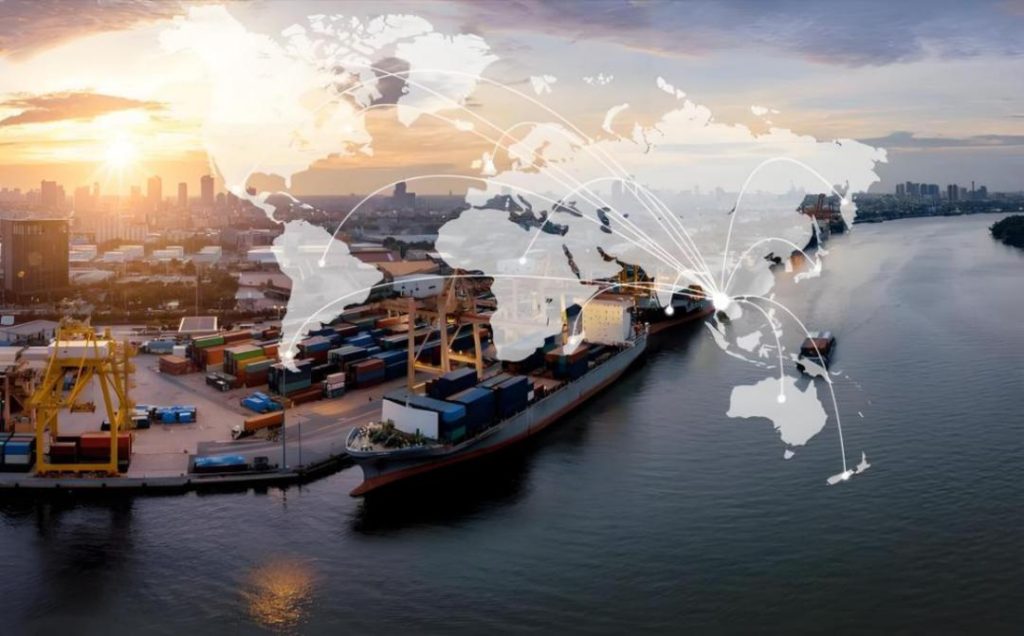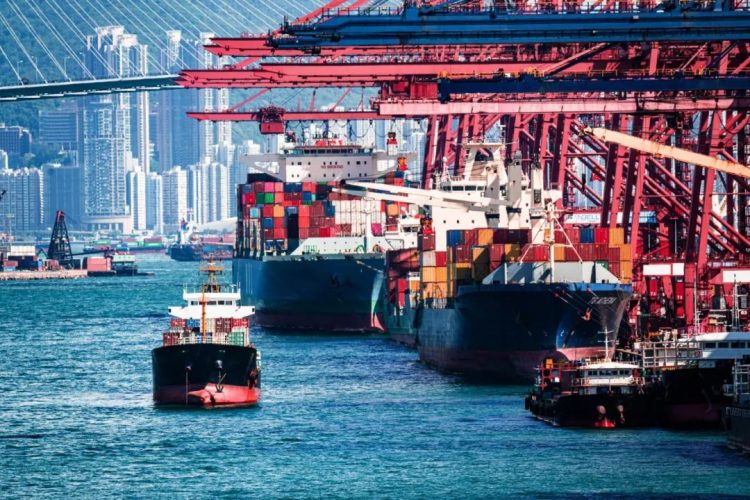Introduction
Over the past few decades, China has solidified its position as the “world’s factory,” becoming the leading hub for global manufacturing. The nation’s manufacturing sector has not only been crucial for China’s economic growth but also for the world’s supply chains, which rely heavily on Chinese-made goods. However, recent disruptions—ranging from the COVID-19 pandemic to ongoing geopolitical tensions—have raised significant questions about the stability and future of China’s manufacturing industry. One of the most important questions in this context is whether the ongoing global supply chain reshuffling will lead to uncertainty about China’s manufacturing prospects.
The restructuring of global supply chains is a response to several factors, including the need for diversification, the rising cost of doing business in China, and concerns about over-reliance on Chinese production. This article will explore how the global supply chain realignment may impact China’s manufacturing industry, examining both the challenges and opportunities that lie ahead.
1. The Shift in Global Supply Chains: Key Drivers
1.1 Disruptions Due to the COVID-19 Pandemic
The pandemic exposed vulnerabilities in global supply chains, especially those heavily reliant on a single country—China. With factories shutting down and transportation networks disrupted, the world quickly realized how dependent it had become on Chinese manufacturing. This realization spurred businesses and governments to rethink their reliance on China for critical supplies.
1.2 Geopolitical Tensions and Trade Wars
Geopolitical tensions, especially between China and the United States, have been another major factor reshaping global supply chains. Trade wars, tariff impositions, and national security concerns have led companies to reconsider their manufacturing and sourcing strategies. The U.S. trade war with China, for instance, pushed many companies to either move their production to other countries or at least diversify their manufacturing operations.
1.3 Rising Labor Costs in China
Over the years, labor costs in China have been steadily rising, making it less attractive as a low-cost manufacturing hub for certain industries. As China’s labor force ages, and wages continue to increase, companies are looking for alternative locations in other emerging markets like Vietnam, India, and Mexico, where labor is cheaper.
1.4 Technological Advancements and Automation
Advancements in automation, robotics, and AI are reducing the need for low-cost human labor. As companies embrace these technologies, the geographical location of manufacturing becomes less important. While China remains a leader in certain advanced manufacturing sectors, automation may decrease the reliance on human labor, making countries with cheaper labor less appealing.
2. The Implications for China’s Manufacturing Industry
2.1 Loss of Low-Cost Advantage
For decades, China’s main advantage in global manufacturing has been its low-cost labor. However, as wages have risen, this advantage is eroding. The cost of production in China has become less competitive for certain industries, especially labor-intensive sectors such as textiles and consumer electronics. As a result, some businesses have begun relocating to countries with lower labor costs, such as Southeast Asia, India, and even Africa. This shift is often referred to as “China plus one” strategy, where companies keep some manufacturing in China while diversifying their supply chains to other countries.
2.2 Potential Decline in Foreign Direct Investment (FDI)
China has long been a major recipient of foreign direct investment (FDI), largely due to its vast manufacturing capabilities. However, the ongoing global supply chain restructuring may reduce the flow of FDI into China’s manufacturing sector. Many multinational companies, particularly in the U.S. and Europe, are now exploring alternatives to China, either by expanding production in other countries or reshoring operations back to their home countries. A decrease in FDI could lead to slower growth in China’s manufacturing sector, particularly in industries like electronics, automotive, and textiles.
2.3 Rising Domestic Consumption and Transition to a Consumption-Based Economy
The Chinese government has been working to transition its economy from one heavily reliant on exports and manufacturing to one driven by domestic consumption. As China’s middle class expands, the domestic market for consumer goods has become a vital growth area. This shift may reduce China’s reliance on global supply chains and open up new opportunities for its manufacturing sector, particularly in high-value industries such as luxury goods, technology, and automotive.
However, this transition is not without its challenges. It requires a shift in both industrial strategy and consumer habits. While China’s domestic market is growing, it remains highly dependent on export markets. The balance between the two will determine whether the country can sustain long-term growth in its manufacturing sector.
3. Opportunities in High-Tech and Advanced Manufacturing
Despite the challenges posed by the global supply chain reshuffling, China’s manufacturing industry still holds several advantages that could ensure its continued importance in the global market. Key areas of opportunity include:
3.1 Leading in High-Tech Manufacturing
While low-cost labor is no longer the primary driver of China’s manufacturing success, its expertise in high-tech manufacturing remains a competitive edge. The country has invested heavily in industries like robotics, semiconductors, renewable energy, and electric vehicles (EVs). These sectors require specialized skills and advanced technologies, areas where China has been rapidly making strides.
The Chinese government has supported these industries through subsidies and policies aimed at boosting technological innovation. For example, China is leading the world in the production of electric vehicles (EVs) and is home to some of the world’s largest battery manufacturers. The growing demand for green energy solutions and electric cars presents a significant opportunity for China to maintain its position as a global manufacturing powerhouse.
3.2 The “Made in China 2025” Initiative
The “Made in China 2025” initiative is an ambitious plan launched by the Chinese government to upgrade the country’s manufacturing sector, emphasizing innovation, technological advancement, and high-end manufacturing. The initiative seeks to reduce China’s dependence on foreign technologies and make the country a global leader in key industries such as aerospace, robotics, artificial intelligence, and high-end machine tools.
By focusing on these sectors, China hopes to transition from being the world’s factory for low-cost goods to a global leader in advanced manufacturing. While challenges remain, particularly in sectors like semiconductors, where China still relies on imports, the country is making significant progress toward self-sufficiency.

4. The Role of Supply Chain Diversification: China’s Resilience
While the global supply chain reshuffling poses certain risks for China’s manufacturing industry, it is also an opportunity for China to adapt and diversify its manufacturing base. The rise of new production hubs in Southeast Asia, India, and Mexico does not necessarily mean a decline for China—it may result in a more diversified global supply chain, where China continues to play a critical role, especially in high-tech and capital-intensive industries.
China has already established a massive domestic supply chain infrastructure, and its manufacturing ecosystem is deeply integrated into global value chains. As other countries try to decentralize their manufacturing from China, the country’s massive market and its efficient supply chain infrastructure continue to offer advantages for global companies.
Moreover, China is increasingly investing in automation, artificial intelligence, and the Internet of Things (IoT) to maintain its competitiveness in the manufacturing sector. These advancements enable Chinese manufacturers to offset rising labor costs and improve productivity.
5. Conclusion: A Transformative Period for China’s Manufacturing Industry
While the global reshuffling of supply chains is undoubtedly challenging for China’s manufacturing sector, it does not signal the end of China’s role in the global economy. Instead, it represents a period of transformation. China must adapt to the changing global landscape by embracing advanced manufacturing techniques, diversifying its product offerings, and focusing on industries that demand high-tech expertise.
China’s manufacturing industry remains resilient, with significant opportunities in high-tech sectors and domestic consumption-driven growth. However, it must also respond to the shifting dynamics of global supply chains and rising costs by evolving with the times. The future of Chinese manufacturing will depend on how well it can balance the needs of global supply chain diversification with its own strategic goals for technological and industrial advancement.
While uncertainty is a factor, China’s manufacturing industry is far from being on the brink of collapse. Instead, it is entering a new phase, one that will require agility, innovation, and a renewed focus on quality and high-tech manufacturing.

















































